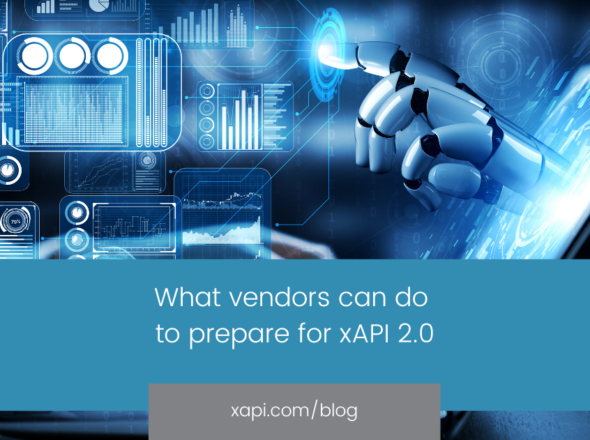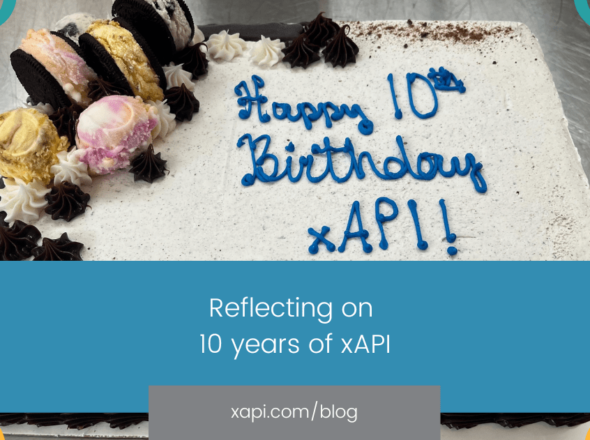Seven years. That’s how long xAPI (then it was called Tin Can API .95 version) has been out in the world. From release improvements to progress on standardization, xAPI has significantly grown—but where does adoption of the eLearning specification stand today? Find out on Tuesday, Oct. 22 at 11 a.m. when I’ll be giving a talk about the State of xAPI: By the Numbers during DevLearn’s xAPI Camp.
It does seem fitting to return to DevLearn for this conversation, as it was at DevLearn 2012 where the initial xAPI implementations made their debut. We have been there since the beginning and have been encouraging the industry-wide adoption of xAPI all along the way.
From the early days of Project Tin Can, we knew it was critical that not only xAPI support was available in all our products, but our support also continued to improve and evolve as the standard evolved. Our products that include a learning record store (LRS) (i.e. Rustici Engine and SCORM Cloud) were some of the earliest to be certified against the ADL test suite. By incorporating early xAPI support, our vendor clients had the ability to more easily support xAPI within their products.
During my talk, I’ll share the numbers behind the growth and adoption of xAPI in the context of its usage in our products. Because we provide eLearning standards support for hundreds of learning platforms and have nearly 200,000 users in SCORM Cloud around the world, we’ve been able to pool a meaningful representation of how others are using xAPI. Even though this may not be a complete picture of the global usage, we have an interesting industry perspective backed by hard data.
While xAPI adoption within solution providers is one side of the story, I’ll also cover the barriers that our organizational clients have overcome to adopt xAPI. While most L&D practitioners are aware of xAPI, many have not yet adopted it as proven in Megan Torrance’s recent eLearning Guild research paper on 2019: The State of xAPI Adoption. Many of our clients are challenged with converting and reporting data from their internal systems into xAPI statements. It is also difficult to identify best practices for representing complex concepts in xAPI data. One example is clients building unique xAPI profiles to ensure their data is meaningful and useful once connected across multiple systems in their ecosystem.
Similarly, our clients are familiar enough with xAPI to understand how it unlocks new opportunities in both the offline and mobile spaces. However, it’s more difficult to take advantage of this functionality than many of our customers realize. While xAPI as a specification has no requirement for online connectivity, using xAPI offline can be challenging because it requires writing the learning activity in such a way to take advantage of the capability.
To date, much of the xAPI-based learning activities we’re seeing in the wild are coming from general-purpose authoring tools. This often means learning activities are expected to be imported into an LMS and launched in a web browser. Supporting this type of activity in an offline fashion generally requires the LMS to provide specific functionality beyond the specification. But we’re still early in the xAPI lifecycle, so we haven’t seen many instances of these types of systems.
So if you’ll be at DevLearn next week, it’s not too late to sign up for xAPI Camp to hear more about xAPI adoption across the industry. It will be a day filled with case studies, problem-solving, networking, and an incredible community of practitioners that will help you make an impact with xAPI. I’ll also be at our booth (Rustici Software Booth 231) in the expo hall if you want to chat more about xAPI.


